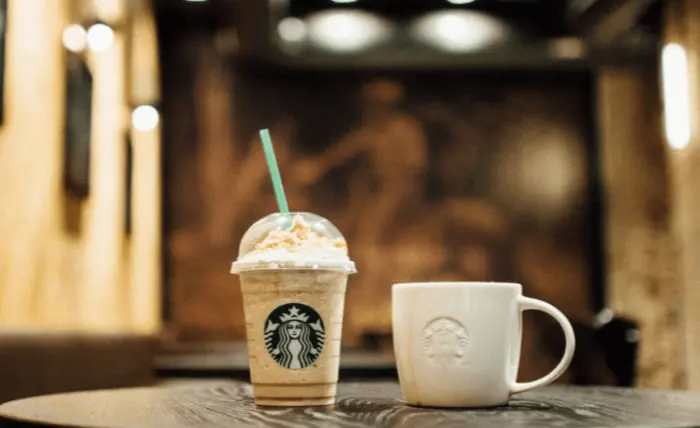Decaf espresso is a popular choice for coffee lovers who want to enjoy the rich flavor of espresso without the full caffeine kick. But how much caffeine is actually in Starbucks decaf espresso? The answer isn’t as straightforward as you might think. This article explores the caffeine content in Starbucks decaf espresso, how decaffeination works, factors affecting caffeine levels, and how it compares to other drinks.
Understanding Decaffeination and Caffeine Content
Decaf coffee is not completely caffeine-free. The decaffeination process removes most, but not all, of the caffeine. According to industry standards, decaf coffee must have at least 97% of its caffeine removed. However, trace amounts remain.
Starbucks follows this standard, meaning their decaf espresso still contains a small amount of caffeine. On average, a single shot (1 oz) of Starbucks decaf espresso has about 3–15 mg of caffeine. This range depends on factors like bean type, roast level, and brewing method.
Factors Affecting Caffeine Levels in Decaf Espresso
Several factors influence how much caffeine ends up in your decaf espresso:
Decaffeination Method
Starbucks primarily uses the Swiss Water Process or carbon dioxide (CO2) method for decaffeination. Both are chemical-free and effective at removing caffeine while preserving flavor. However, no method can eliminate caffeine entirely.
Coffee Bean Variety
Different coffee beans have varying caffeine levels. Arabica beans, which Starbucks mostly uses, naturally contain less caffeine than Robusta beans. Since decaf espresso starts with Arabica, the residual caffeine is relatively low.
Roast Level
Contrary to popular belief, darker roasts do not have less caffeine than lighter roasts. The difference is minimal. Starbucks’ decaf espresso roast is medium-dark, meaning caffeine content remains consistent with industry averages.
Brewing Process
Espresso extraction affects caffeine levels. A standard single shot (1 oz) of decaf espresso has 3–15 mg, while a double shot (2 oz) may have 6–30 mg. Barista techniques, such as grind size and extraction time, can also slightly alter caffeine content.
Comparing Starbucks Decaf Espresso to Other Drinks
To put things in perspective, let’s compare Starbucks decaf espresso to other caffeinated beverages:
Regular Starbucks Espresso (single shot): ~75 mg
Starbucks Decaf Espresso (single shot): ~3–15 mg
Starbucks Decaf Brewed Coffee (8 oz): ~12–25 mg
Coca-Cola (12 oz): ~34 mg
Black Tea (8 oz): ~40–60 mg
Even though decaf espresso has minimal caffeine, it’s not zero. If you’re highly sensitive to caffeine, this small amount might still affect you.
Why Does Starbucks Decaf Espresso Have Caffeine?
Many people assume “decaf” means “caffeine-free,” but that’s not the case. The decaffeination process can’t remove every single caffeine molecule without destroying the coffee’s flavor. Regulatory standards allow up to 3% residual caffeine in decaf coffee, which is why trace amounts remain.
Starbucks adheres to these guidelines, ensuring their decaf espresso is safe for most people who want to reduce caffeine intake without eliminating it entirely.
How Much Decaf Espresso is Safe to Drink?
For most healthy adults, moderate caffeine consumption (up to 400 mg per day) is considered safe. Since decaf espresso contains only 3–15 mg per shot, you’d need to drink dozens of shots to reach that limit.
However, some individuals—such as pregnant women, people with heart conditions, or those extremely sensitive to caffeine—may need to monitor intake more carefully. If you’re concerned, consult a healthcare professional.
Myths About Decaf Espresso
There are several misconceptions about decaf coffee:
Myth 1: Decaf is 100% Caffeine-Free
As discussed, decaf still has trace amounts. The exact quantity varies but is usually under 15 mg per shot.
Myth 2: Dark Roast Decaf Has Less Caffeine
Roast level doesn’t significantly impact caffeine content. The decaffeination process is what matters most.
Myth 3: Decaf Tastes Inferior
Modern decaffeination methods preserve flavor well. Starbucks decaf espresso retains much of the richness and depth of regular espresso.
How to Order Decaf Espresso at Starbucks
If you want to minimize caffeine, here’s how to order: Ask for a single shot of decaf espresso (3–15 mg). For a latte or cappuccino, request decaf espresso as the base. Be aware that some Starbucks drinks (like flavored lattes) may use half-decaf or mixed shots, which increases caffeine content.
Conclusion
Starbucks decaf espresso contains a small amount of caffeine—typically 3–15 mg per shot. While significantly less than regular espresso, it’s not entirely caffeine-free. Factors like bean type, decaffeination method, and brewing process influence the exact amount.
If you’re avoiding caffeine for health reasons, decaf espresso is a good option, but be mindful of your total intake. For most people, drinking decaf espresso in moderation is perfectly safe and allows you to enjoy coffee’s flavor without the strong caffeine effects. Would you like to know more about other Starbucks decaf drinks or caffeine comparisons? Let us know in the comments!
Related topics:
How Do You Make Espresso Powder?
How Much Pressure to Make Espresso?
How Many Grams of Coffee to Make Espresso?


